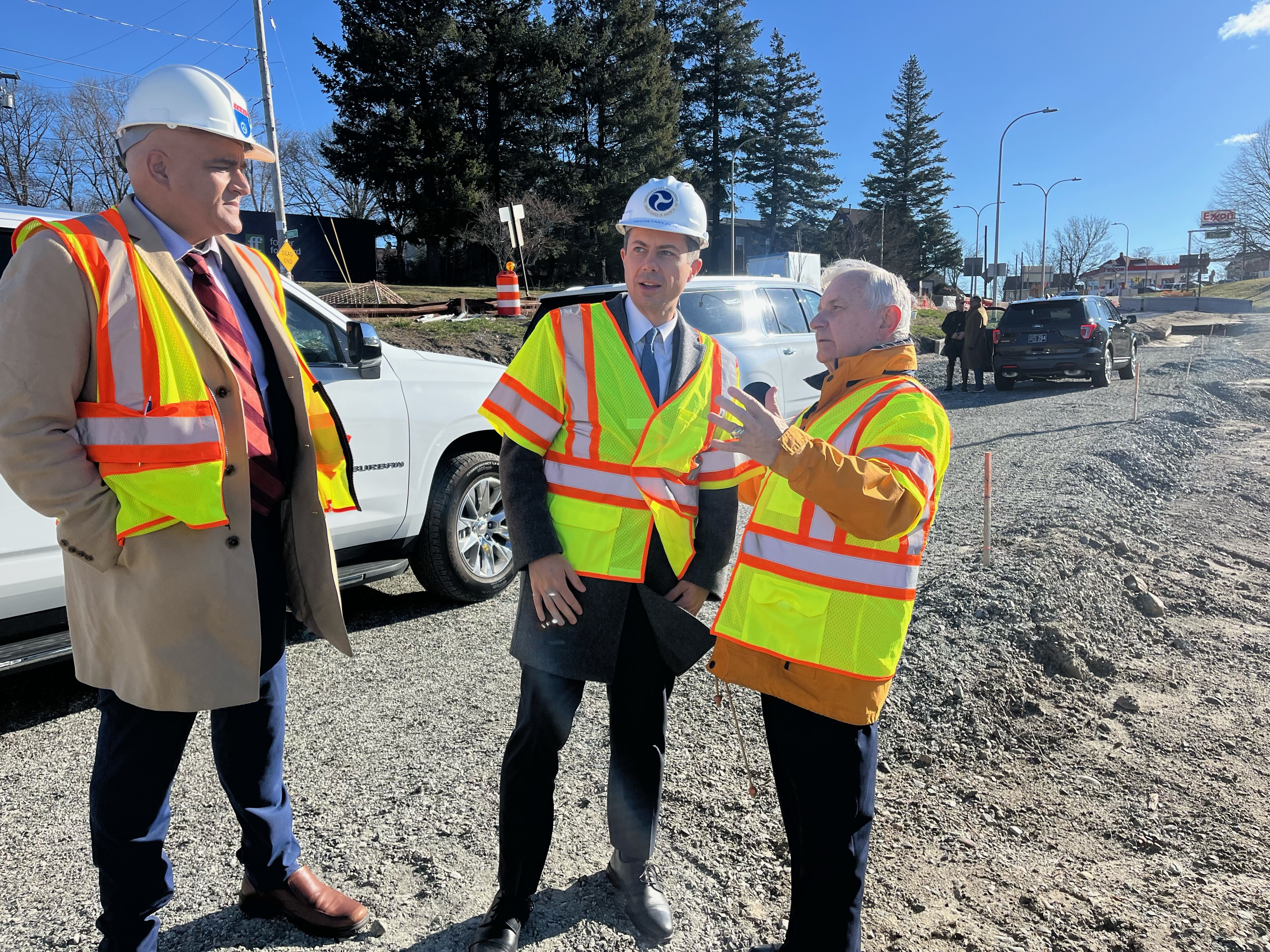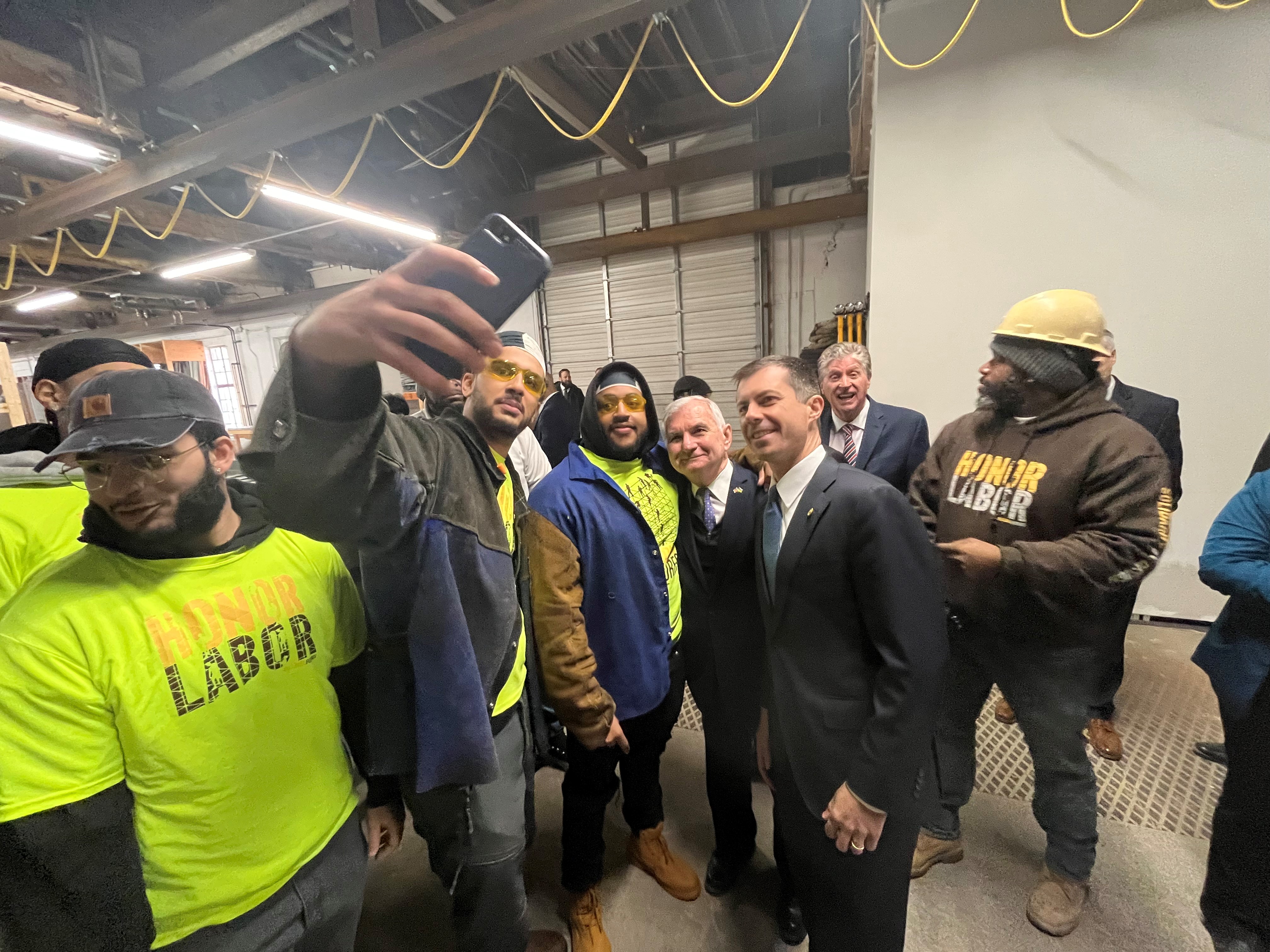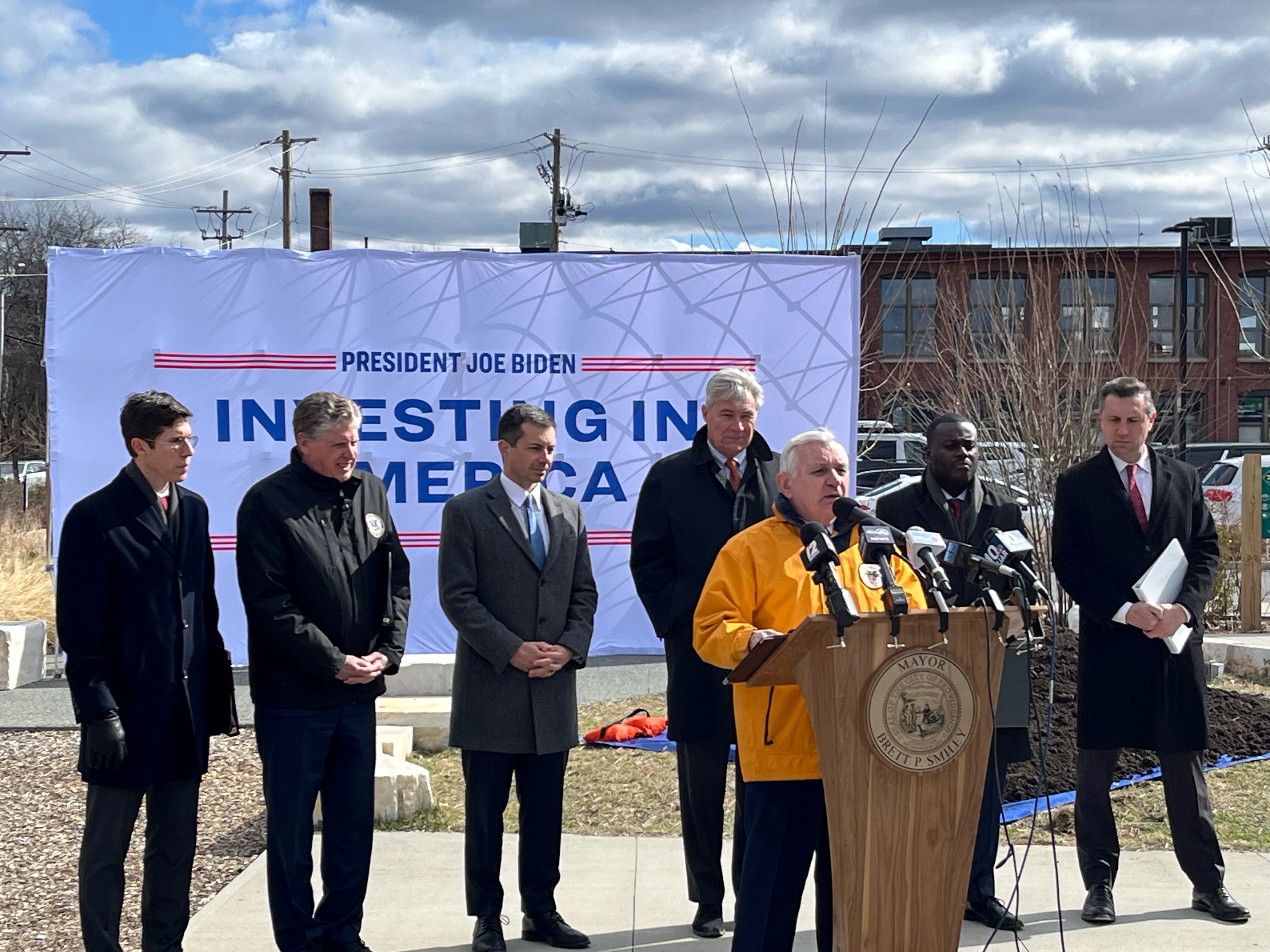During Sec. Buttigieg’s Visit to RI, Reed Urges RIDOT & USDOT to Act Rapidly to Replace the Washington Bridge
Reed, a senior member of the Appropriations Committee, also joins head of USDOT for groundbreaking of Woonasquatucket River Greenway Improvement Project and for tour of Building Futures apprenticeship program
PROVIDENCE, RI -- U.S. Department of Transportation (USDOT) Secretary Pete Buttigieg knows the importance of speed. Just days after Rhode Island’s Governor and state transportation officials acknowledged the need to demolish and replace the now-closed Washington Bridge westbound on Interstate 195, President Joe Biden’s top transportation official was on the scene to tour the bridge and meet with local stakeholders. U.S. Senator Jack Reed is urging the state, and Secretary Buttigieg, to act quickly and wisely to replace the westbound section of the Washington Bridge.
An independent review of the bridge — which carried an estimated 100,000 vehicles every day along Interstate 195 over the Seekonk River, connecting Providence and East Providence — uncovered structural deficiencies requiring that the westbound bridge be demolished and replaced.
According to the state’s current estimate, if everything goes smoothly, the project will take at least two years and cost $250 million to $300 million. During the demolition and replacement of the westbound bridge, the state will reroute six lanes of traffic — three in each direction — on the separate eastbound bridge structure.
Today, Senator Reed, a senior member of the Appropriations Committee, helped welcome Secretary Buttigieg and top federal transportation officials to the Ocean State. Reed urged the federal government to continue moving as rapidly as possible to assist the Rhode Island Department of Transportation (RIDOT) with the project, including with federal funding and technical assistance.
“This is a time when we need all hands on deck, working together to get the job done. Secretary Buttigieg has done excellent work leading the Department of Transportation and we’re grateful that he came up to Rhode Island to get a firsthand look at the Washington Bridge. The Secretary saw for himself how the emergency closure of this bridge, while necessary, has created gridlock and hardship for drivers, businesses, and the community. The state has undertaken its preliminary review, but I can’t stress enough that speed and quality are vitally important here. All funding options are on the table, but the driver for next steps is when the state has its full plan ready. I am hopeful USDOT officials can help point the state in the right direction. My colleagues in the delegation and I will make securing federal funds to replace the bridge a priority,” said Senator Reed, who, as an appropriator, helped create and support several key programs through the Bipartisan Infrastructure Law that could be helpful to the state.
One of the key programs created in the Bipartisan Infrastructure Law, which President Biden signed in 2021, is the National Infrastructure Project Assistance (Mega) program.
Senator Reed, as a member of the Appropriations Committee, helped create the Mega program in order to dedicate federal funds for large projects like bridges that are critical to commerce and to regional or national significance, but too large or complex for existing funding programs. The program was enacted as part of the Bipartisan Infrastructure Law and Congress appropriated $5 billion to the program, to be awarded over five years, through 2026. Under the law, USDOT will award 50 percent of funding to projects greater than $500 million in cost, and 50 percent to projects greater than $100 million but less than $500 million in cost.
In addition to touring the closed section of the Washington Bridge, Secretary Buttigieg also met with transportation workers and local business leaders, and helped break ceremonial ground on a new section of the Woonasquatucket River Greenway Project to extend the greenway along Kinsley Avenue from Eagle Square to Providence Place Mall. The City of Providence is managing this $10 million section of the project – utilizing $4.5 million in federal funds. When it is completed, the project will provide a safe connection for those walking and riding bicycles between downtown Providence and Eagle Square, enhance the urban/natural river interface, increase public recreational use of the riverfront, strengthen stormwater management, encourage economic development, and create stronger connections between Downtown and the Smith Hill, Valley, and Olneyville neighborhoods. The City will begin construction in early April and expects to complete the work by the end of 2024.
Over the years, Senator Reed has worked closely with his colleagues in the delegation and the Woonasquatucket River Watershed Council (WRWC) to fund improvements along the greenway. He helped secure the designation of the Woonasquatucket River Greenway Project as a Brownfields Showcase Community; delivered $2.1 million for environmental assessments, planning, and design work, and has since secured over $14.15 million for the Greenway, including recent earmarks for WRWC.
Senator Reed also joined Secretary Buttigieg to tour Building Futures and get a firsthand look at how federal dollars are being utilized to train more workers in a variety of fields as the state gears up to build the major infrastructure projects that Congress provided funding for over the last three years.
Building Futures is a statewide non-profit that helps young people earn money while learning a skilled-trade from the ground up. Building Futures’ nationally acclaimed construction pre-apprenticeship program prepares low-income adults for rewarding careers in commercial construction through Registered Apprenticeships.
Last year, Senator Reed helped deliver $353,679 in federal funding to help the Rhode Island Department of Labor and Training (DLT) and Building Futures improve and expand its Registered Apprenticeship program. RIDOT has also directed approximately $500,000 in Federal Highway Administration (FHWA) formula dollars to Building Futures for training in transportation-related fields through the On-the-Job Training and Supportive Services Programs (OJT/SS). OJT/SS is a USDOT program that requires State Transportation Agencies to establish apprenticeship and training programs targeted to move women, minorities, and disadvantaged individuals into journey-level positions to ensure that a competent workforce is available to meet highway construction hiring needs, and to address the historical under-representation of these groups in highway construction skilled crafts.


